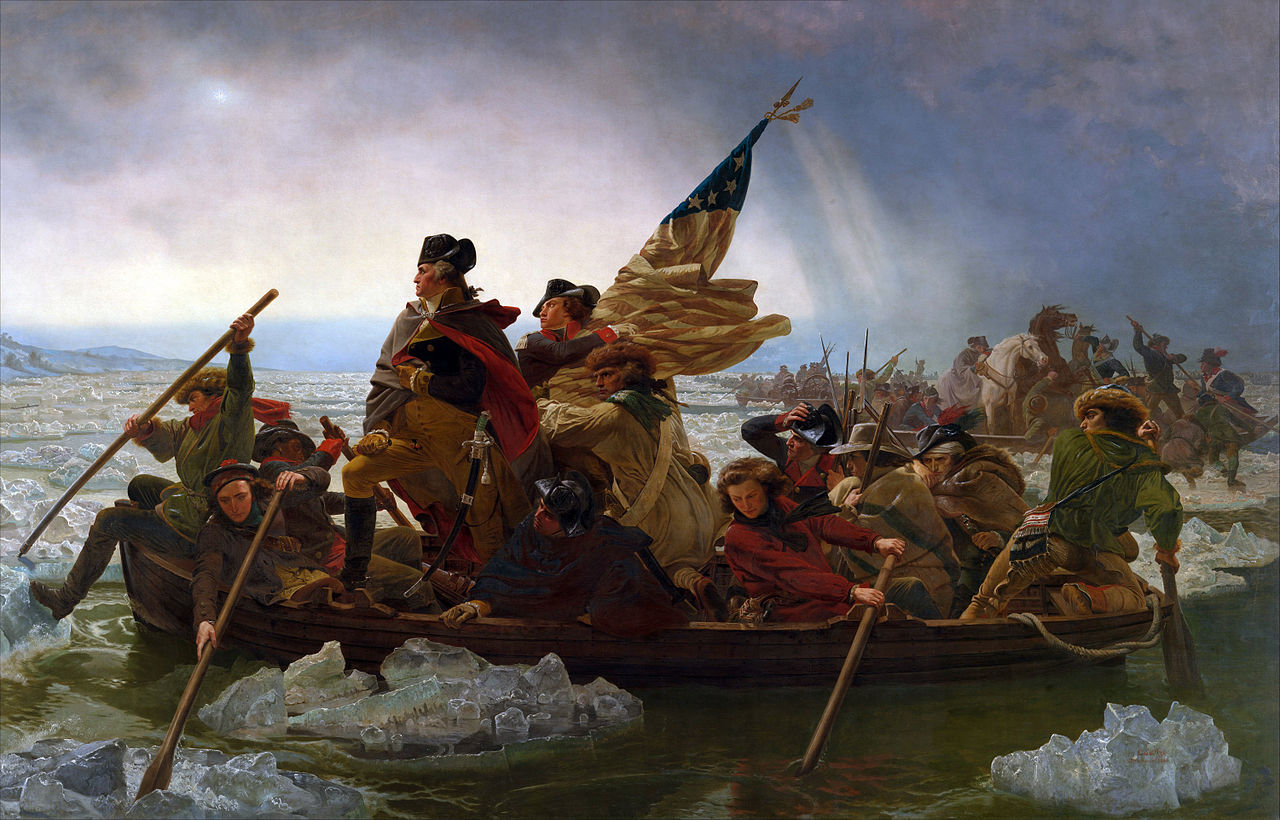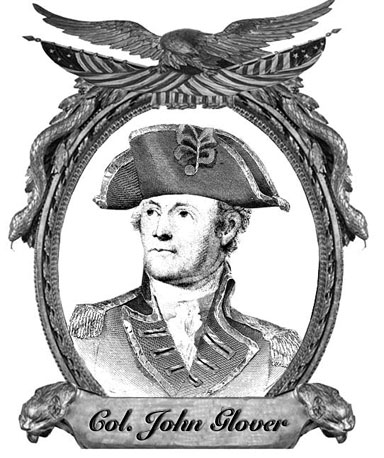 How a shoemaker and his fishermen saved George Washington’s army.
How a shoemaker and his fishermen saved George Washington’s army.
Frank Lyons enjoys portraying the man who made possible George Washington’s famous crossing of the Delaware in 1776.
Three times John Glover came to Washington’s rescue in the American Revolution. Without him, that rebellion and the heroic river crossing most certainly would have failed. Without Glover, we might now be looking at Queen Elizabeth II on the $1 bill rather than ol’ George.
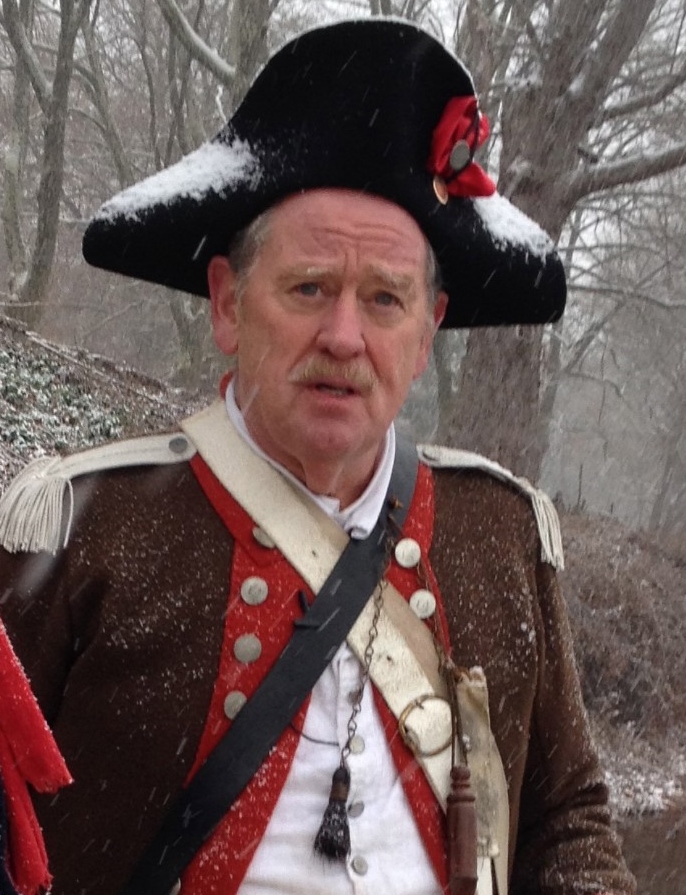
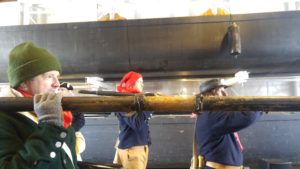
These days you get a sense of Glover by attending the dress rehearsal in Washington Crossing Historic Park on Sunday (Dec. 9) or the re-enacted crossing on Christmas Day. It’s then Lyons, a retired airline pilot who owns Yardley’s historic Continental Tavern, mobilizes “Glover’s Regiment.” They’ll sing thunderous sea shanties inside the park’s boat house, then march down to the river toting 16-foot-long oars. Four Durham boats will await them to restage Bucks County’s slice of momentous national history. Lyons channels his hero and dresses the part with exacting detail: brown jacket, trousers trimmed with pewter buttons, and a tri-corner hat with a scarlet rosette indicating his rank as regimental colonel.
So who was Glover, lesser known hero of the Revolution?
Born in 1732 in Salem, Mass., he apprenticed as a shoemaker. His ambition, however, led to the nearby wharves of Marblehead where he became a prosperous rum trader with a fleet of sailing ships. He also was lieutenant colonel of the Marblehead militia composed of mariners who had sailed the world. After the Boston Massacre of 1770, Glover and his 550-man regiment aligned themselves with George Washington who chartered Glover’s schooner Hannah to successfully raid British ships.
Lyons describes Glover as a tactical genius with fiery red hair and standing 5-foot 4-inches tall, a foot shorter than the commander-in-chief. “Glover was one of the 10 great war heroes who would run through a wall for Washington and come out on the other side victorious,” said Lyons.
The Marbleheaders proved their mettle after Washington’s 9,000-man army lost the Battle of Long Island on Aug. 27, 1776 to 14,000 British troops intent on finishing them off the following day. Under cover of fog and darkness, Glover’s mariners used flatboats to evacuate the army across the East River to safety on Manhattan Island. It was accomplished silently over 13 hours with strong pulls of muffled oars. “The American army was saved,” as the Marblehead Historical Society put it in 1903. British General Howe wasn’t about to let Washington slip away. In mid-Oct, a British fleet sailed up the East River into Long Island Sound with troops intent on crossing the Bronx to capture the King’s Bridge in northwest Manhattan, the only escape route off the island for Washington. Glover’s 700-man brigade held off the 4,000-man force at Pehlam Bay inflicting hundreds of casualties while suffering only 22. Glover positioned his soliders behind stone walls as the enemy advanced.
This stalling action gave Washington the time needed to escape from Manhattan to White Plains, where he would eventually cross the Hudson and begin a fighting retreat through New Jersey. Howe continued the pursuit, inflicting casualties on the retreating army that found sanctuary across the Delaware River in Bucks County. At Washington’s directive, all boats on the Jersey side of the river were confiscated and moved to Pennsylvania to thwart any British crossing.
Glover and his remaining 240-man regiment arrived in Bucks on Dec. 22. Washington detailed his plan to counter attack at a strategy session at a home on Upper Makefield’s Jericho Mountain. He would have the Marbleheaders ferry the Continental Army across the Delaware on Christmas night in a surprise attack on a Hessian garrison in Trenton. Howe’s army had pulled back to winter quarters in Princeton.. Washington explained the crossing must occur in the dead of night amid swift, rocky currents clogged with floating ice and the expectation of a developing blizzard.
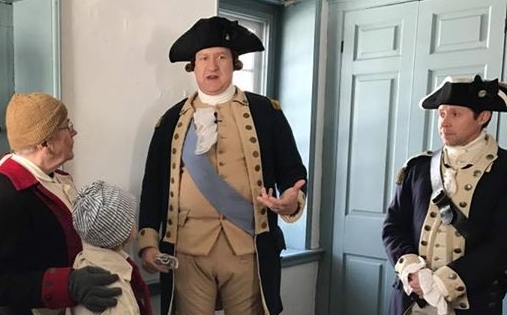
“Your Excellency, it’s impossible!” declared Glover. “I didn’t ask you if it was possible,” redressed Washington. “I’m asking, can you do it?” The colonel answered, “General Washington, my Marbleheaders can do it.”
Washington (in the personage of re-enactor and Langhorne police chief John Godzieba) explained to my grandson Dashiell and me at last year’s dress rehearsal how he had almost given up the cause. “After defeats in New York and New Jersey, we thought it was over. We’d all go home. The British army was just too powerful. The soldier’s enlistments were about to end as well. To continue the fight, we needed something to boost morale. I calculated the numbers and saw a way. There were 1,400 Hessians guarding Trenton and we had 2,400 troops. Just by sheer numbers we thought we had a chance making a surprise attack.”
Using confiscated Durham boats and ferry barges capable of carrying one wagon and a horse at a time, Glover’s regiment went to work. The entire army, its horses and artillery reached the New Jersey shore by 4 a.m. After a nine-mile march down river the Continentals swarmed Trenton in total triumph.
A few days later the Marbleheaders and their leader disbanded, their enlistments expired. They headed home to Massachusetts as heroes of the Revolution.
Sources include ”General John Glover and his Marblehead Mariners” by George Athan Billias published in 1960, and “Gen. John Glober and His Marblehead Regiment in the Revolutionary War” published by the Marblehead Historical Society on May 14, 1903. A tip of the tri-corner to Frank Lyons for his help. Sunday’s dress rehearsal is scheduled to begin at 10 a.m. and continue to 4 p.m. in Washington Crossing.

